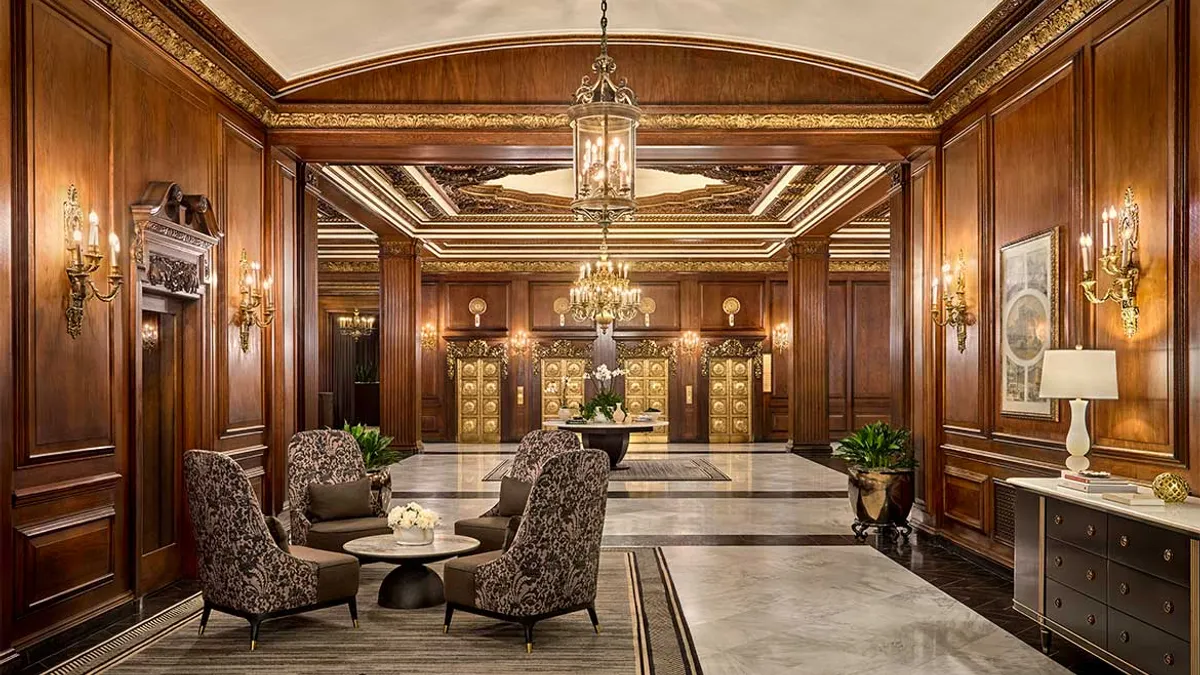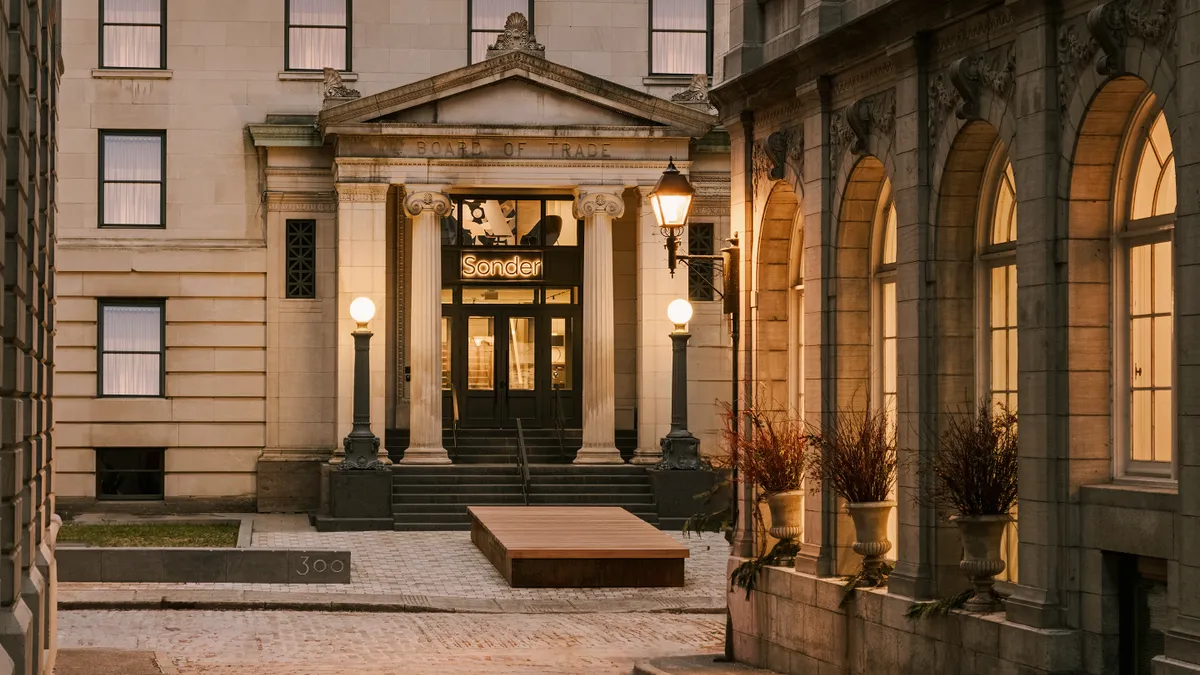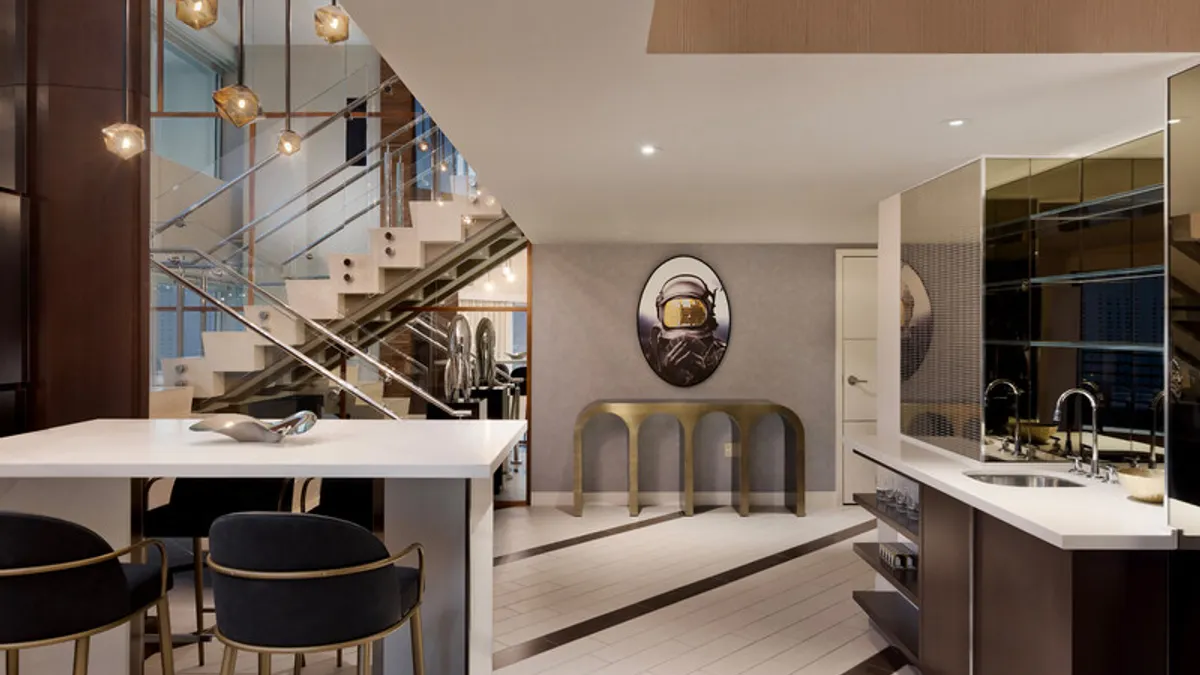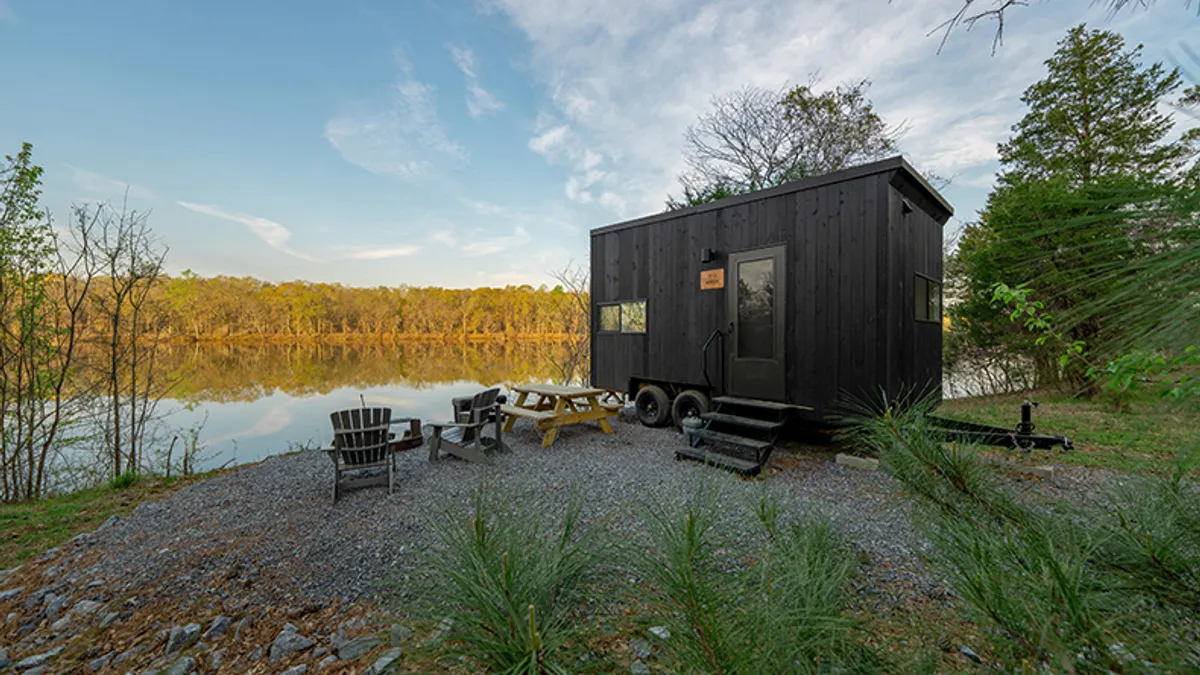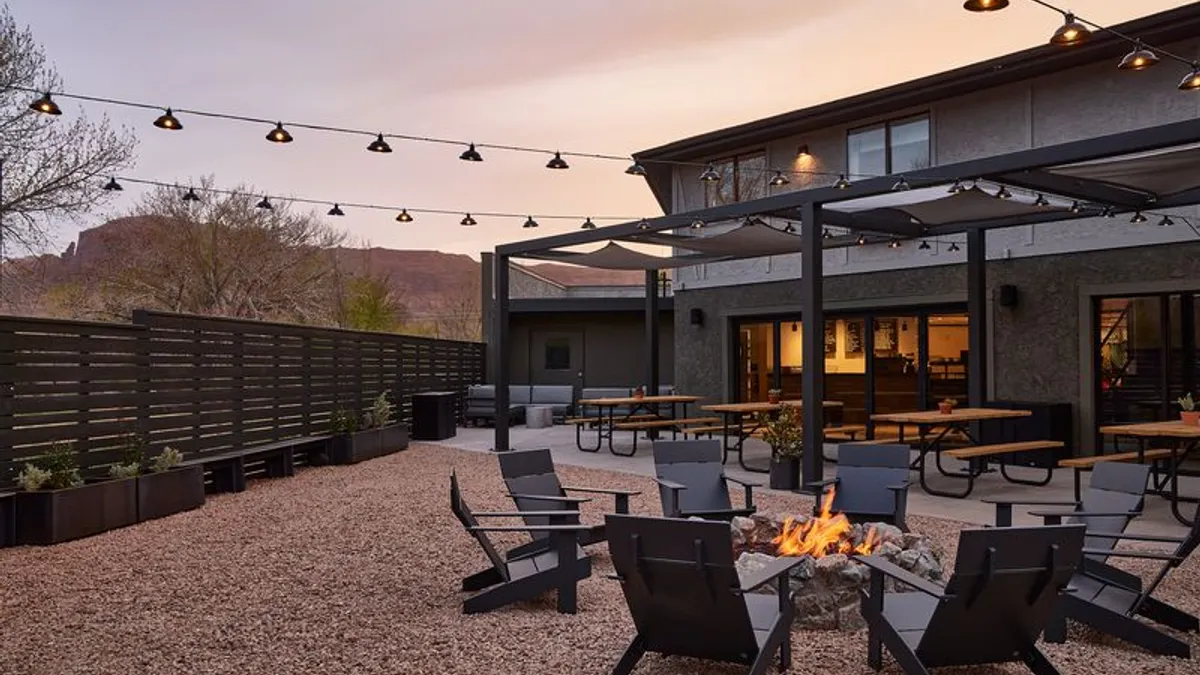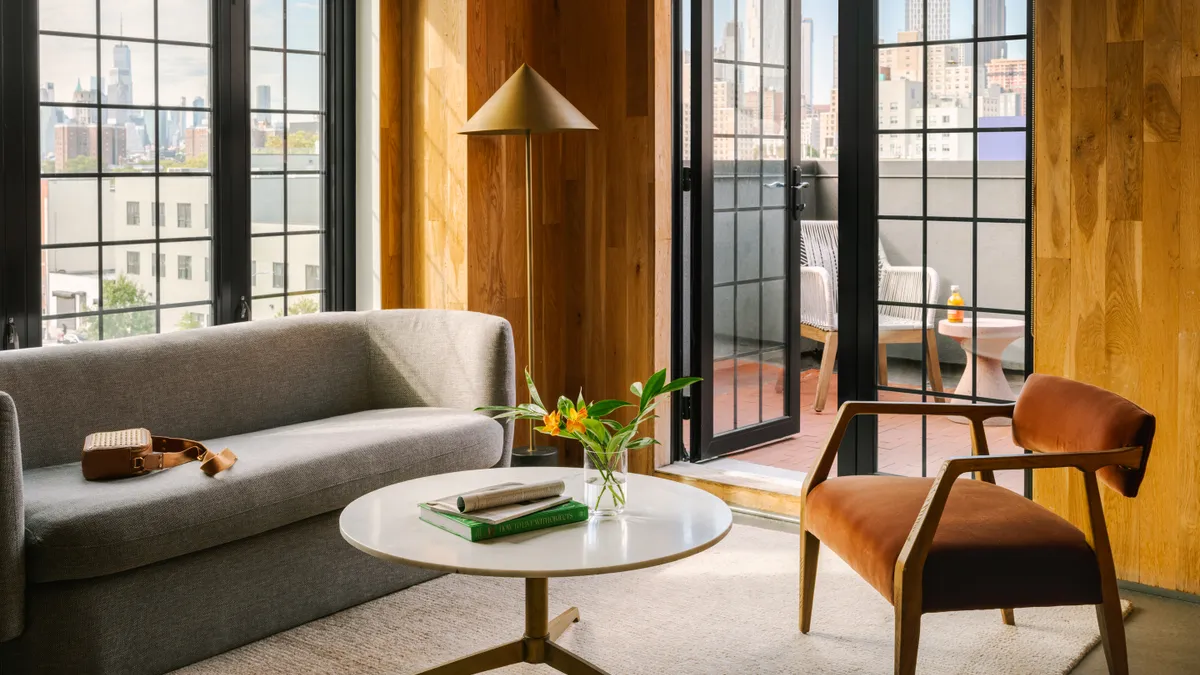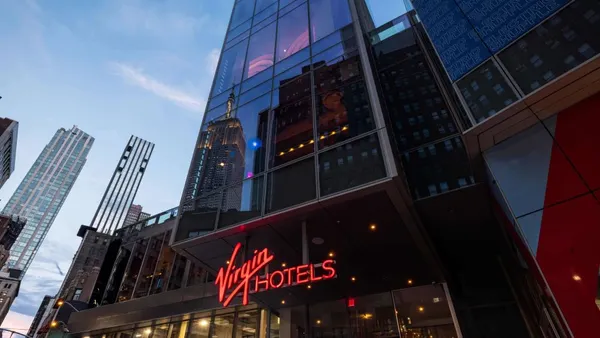On the cusp of Omni Parker House’s 170th anniversary on Oct. 8, Omni Hotels & Resorts has ushered in a new era at its landmark Boston hotel.
Last month, Omni wrapped a $65 million propertywide restoration of the Parker House hotel. The renovation project, rooted in the property’s storied past, brought the longest-operating hotel in the U.S. up to date to meet today’s luxury traveler demand for modernization and storytelling — with design that stands the test of time.
Each design element was intricately selected for Omni Parker House by the hotel company’s in-house design department, led by Senior Director of Interior Design Tonya Grine.
As the project crossed the finish line after several years, Grine sat down with Hotel Dive to share the history behind the famed hotel and how its past informed the design of its present. Meanwhile, Omni Chief Commercial Officer Jeff Doane shared how the multimillion-dollar restoration is part of a broader strategy by Omni to steward its hotel portfolio into the future.
An enduring history
Situated along Boston’s Freedom Trail, Omni Parker House is a staple of not only the city, but also American history, the Omni team shared with Hotel Dive. The hotel has served as a gathering and resting place for some of the country’s most notable figures.
Founded by Harvey D. Parker in 1855 in the throes of America’s golden age of literature, it is said that the Omni Parker House was frequented, in its most early days, by writers including Ralph Waldo Emerson, Henry David Thoreau and Nathaneil Hawthorne. Leading discourse at the hotel’s 19th-century Saturday Club, they were among some of the first famous guests to stay at the Parker House hotel — a directory that would later come to know athletes, politicians and celebrities.
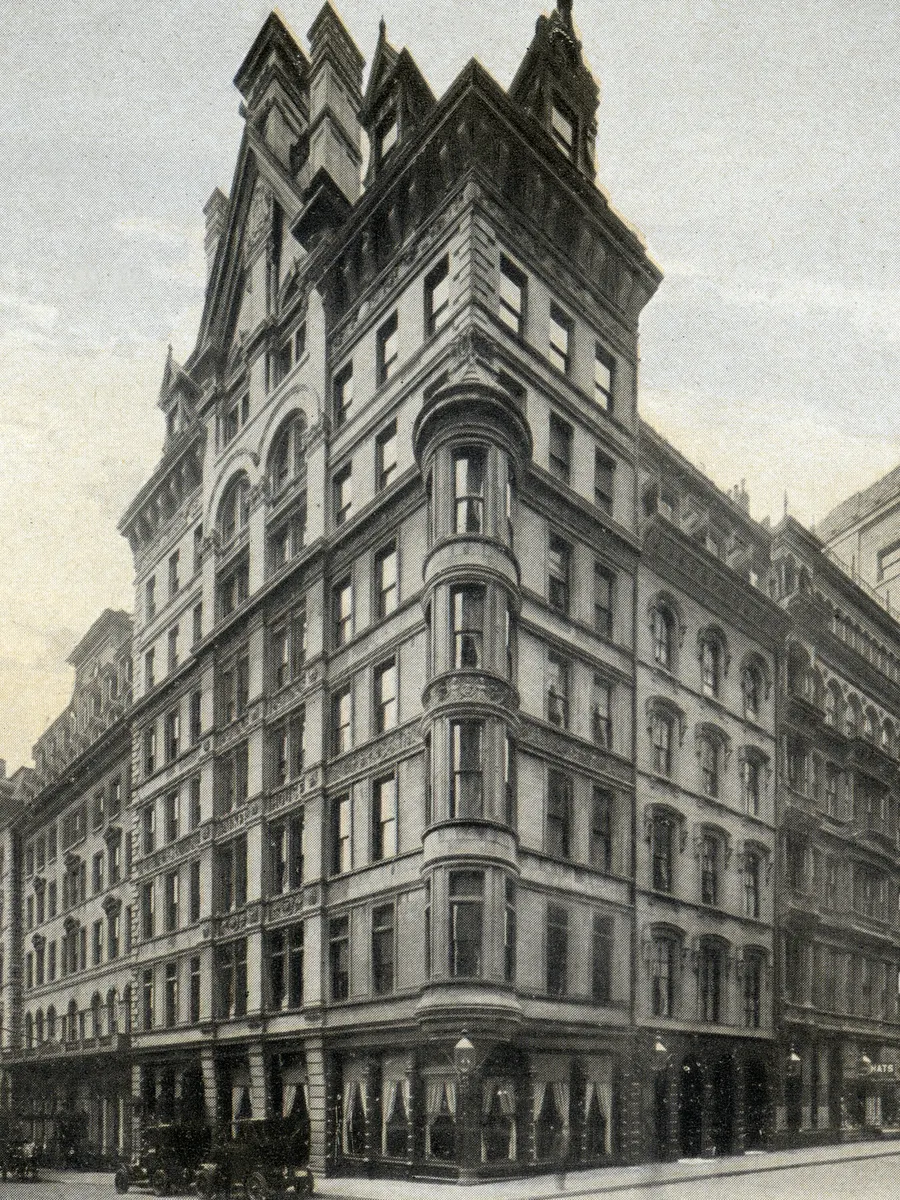
Since its founding, the hotel has hosted notable events, including President John F. Kennedy’s first announcement of his bid for Congress in 1946. Kennedy later proposed to his future wife and first lady Jacqueline Kennedy at the hotel’s restaurant in 1953. That eatery was also the birthplace of the Parker House Roll and the original Boston Cream Pie.
Before those feats, though, the hotel was America’s first “elegant inn,” a title that struck Omni’s Grine upon her initial research into the hotel, and a detail that would go on to shape Omni’s latest reinvention of the Parker House hotel.
Remaking a magnum
To start the renovation, as Omni’s design team does for all projects of this magnitude, the group traveled to the Parker House hotel to establish a scope of work, Grine shared.
“A goal of this renovation was to take all of that research and history and have slight nods to it within every design decision — but in a very subtle, not blatant way.”

Tonya Grine
Senior Director of Interior Design at Omni Hotels & Resorts
The hotel had great bones, she explained, but it would need a full gut renovation to bring its outdated and small-scale rooms to modern standards.
Extensive research into the hotel’s famed past — which came after the scope of work was established — led Grine to many of the design decisions for the project. She wanted to “embrace the history and heritage of the Parker House,” while making the hotel functional for modern guests. She also wanted it to stand out among a slate of competing hotels in Boston.
Despite that competition, the Parker House has been a leader of hospitality in the city since its inception, representing the first “elegant inn” in the city, Grine learned through her research.
The term elegant inn, she came to find, was established during the natural evolution of hotels over time. What historically was a roadside tavern became a boarding house that only men frequented. And, as time went on, those boarding houses became more refined and available to both men and women — eventually more closely resembling what is now thought of as a hotel, Grine explained.
Around the time when the Parker House got its start, “the glamor of travel, hotel travel specifically, was born,” Grine said. Men and women began utilizing hotels for more than just a gathering place. Hotels became a place that enabled them to explore different cities, she noted.
Travelers would come to Boston by horse-drawn carriage, dressed up and lugging beautiful gowns and other luxurious belongings in adorned leather trunks, Grine explained. “That was my inspiration for the design of the guest rooms,” she said.
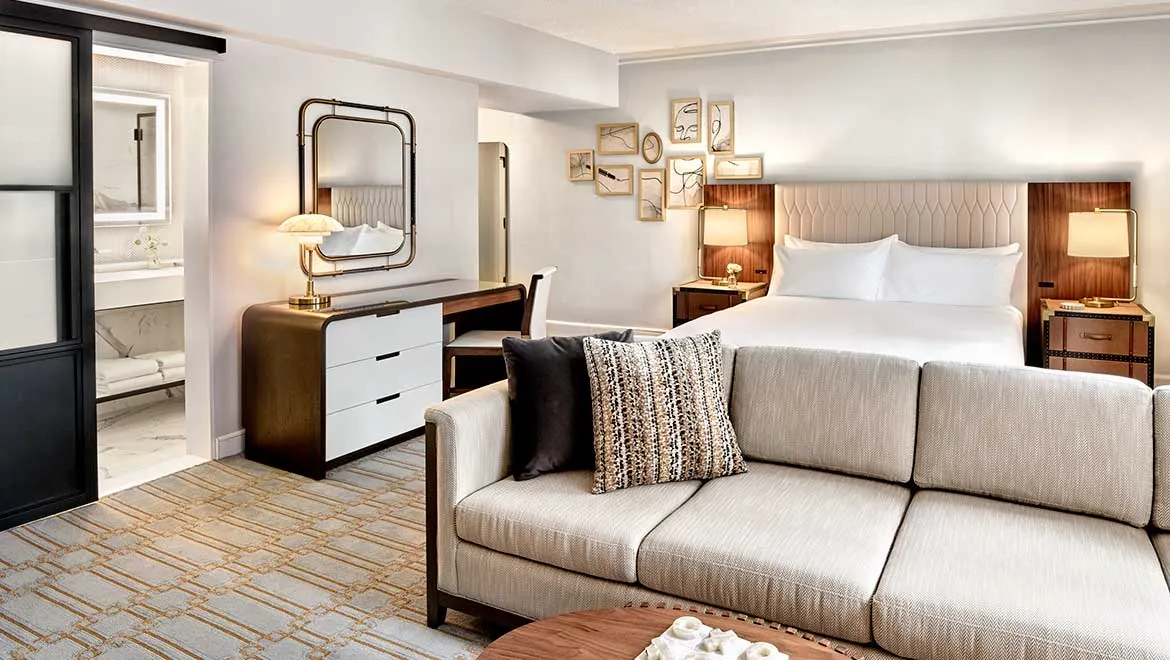
For example, the headboards in Omni Parker House’s newly designed guest rooms feature a vertical diamond channel tufting, which was inspired by the inner lining of a horse-drawn carriage coach, Grine shared. To modernize the design, the finish on the material is a subtle cream color instead of a more traditional dark black or brown.
The guest bathrooms — one of the biggest challenges of the project due to their small size — were also completely redesigned with marble surfaces, walk-in showers and curated bath amenities.
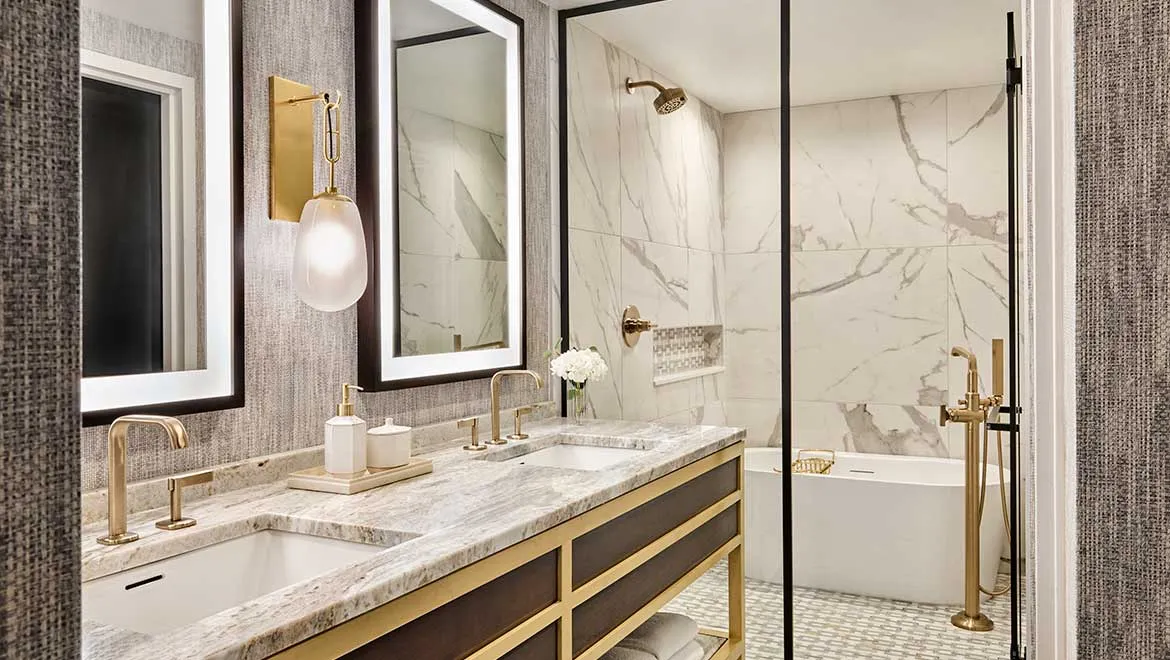
“When you walk into the guest room, it’s very light, bright, luxurious, classic and tailored,” Grine said. “A goal of this renovation was to take all of that research and history and have slight nods to it within every design decision — but in a very subtle, not blatant way.”
Other distinct details throughout the rooms include the nightstands, which resemble the vintage leather trunks that the Parker House’s first guests would have carried with them, and the mirror above the desk, featuring a leather-wrapped detail, Grine shared.
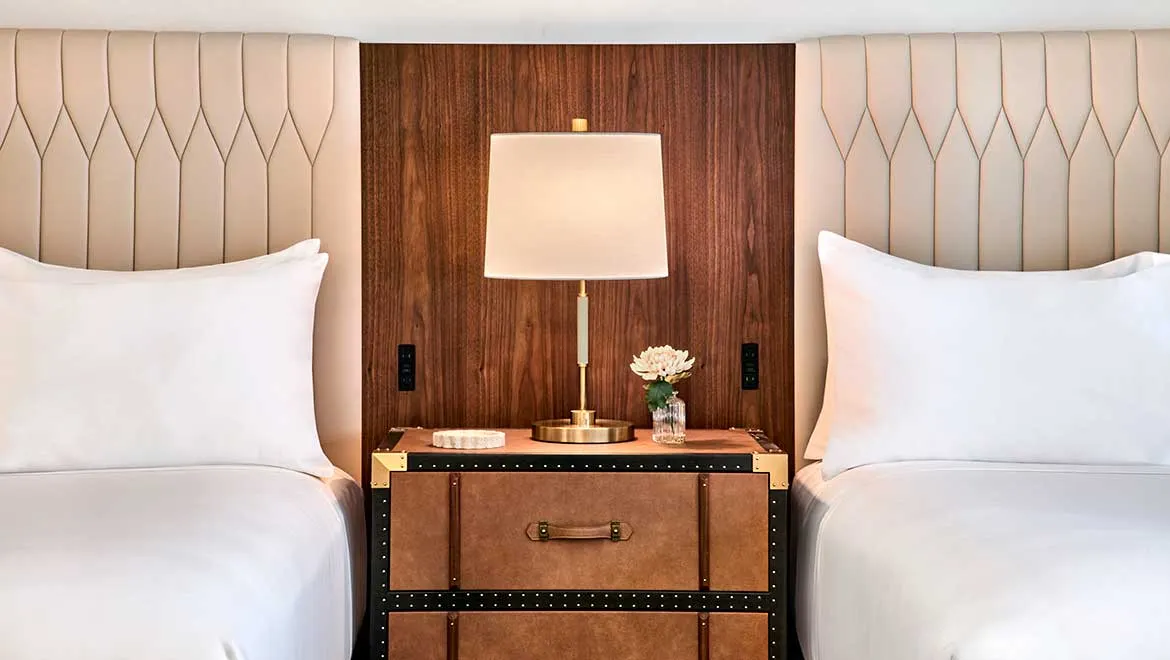
The historic, high-end touches carry into all aspects of the hotel, including its 23,000 square feet of meetings and events space and its lobby, which got new marble flooring, bespoke furnishings and custom carpets.
“I think we did an incredible job of maintaining the original history and sensibility of the hotel, while including amenities that guests would expect in this day and age from a four- or five-star hotel,” Jeff Doane, chief commercial officer at Omni Hotels & Resorts, told Hotel Dive.
The restoration, Doane shared, was part of Omni’s broader strategy to elevate its luxury offerings portfoliowide.
The future is elevated
Omni is working to elevate its hotel offerings from a four-star experience to a higher level of luxury, according to Doane.
“We have a hope, desire and intent to attract a different type of traveler,” he said, meaning a customer who is comfortable in the higher-tier luxury category. And the company is taking actionable steps to make that happen.
The Parker House restoration is part of a five-year, $1.5 billion commitment to support historic restorations, new developments and international expansion across Omni’s portfolio, Doane noted.
The initiative began in 2023 with the aim to ensure that Omni’s “customer-facing identity accurately reflects our brand’s story while highlighting the experiences we offer our guests,” Omni President Kurt Alexander said in a statement.
According to Doane, the brand transformation is meant to create cohesion across Omni’s hotel portfolio, which spans 50 hotels and resorts across unique destinations in the U.S. and Canada.
If a guest has an expectation from their stay at an Omni hotel in Dallas, for example, “we want to deliver that same type of experience and deliver on that same type of expectation when they go to Boston,” Doane said.
The Parker House renovation follows other recent historic restorations by Omni, including its $150 million revamp of the 250-year-old Omni Homestead Resort in Virginia.
By restoring hotels within its portfolio, bringing them up to the standards that guests expect in their respective markets, Omni is “doing the right thing by the hotel,” while also elevating its overall brand, Doane said.
“We have a number of iconic properties with this level of history and standing in the country, and we’re going about restoring [many] of these hotels with that same thought process,” Doane said.



